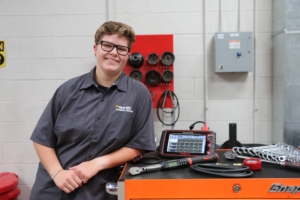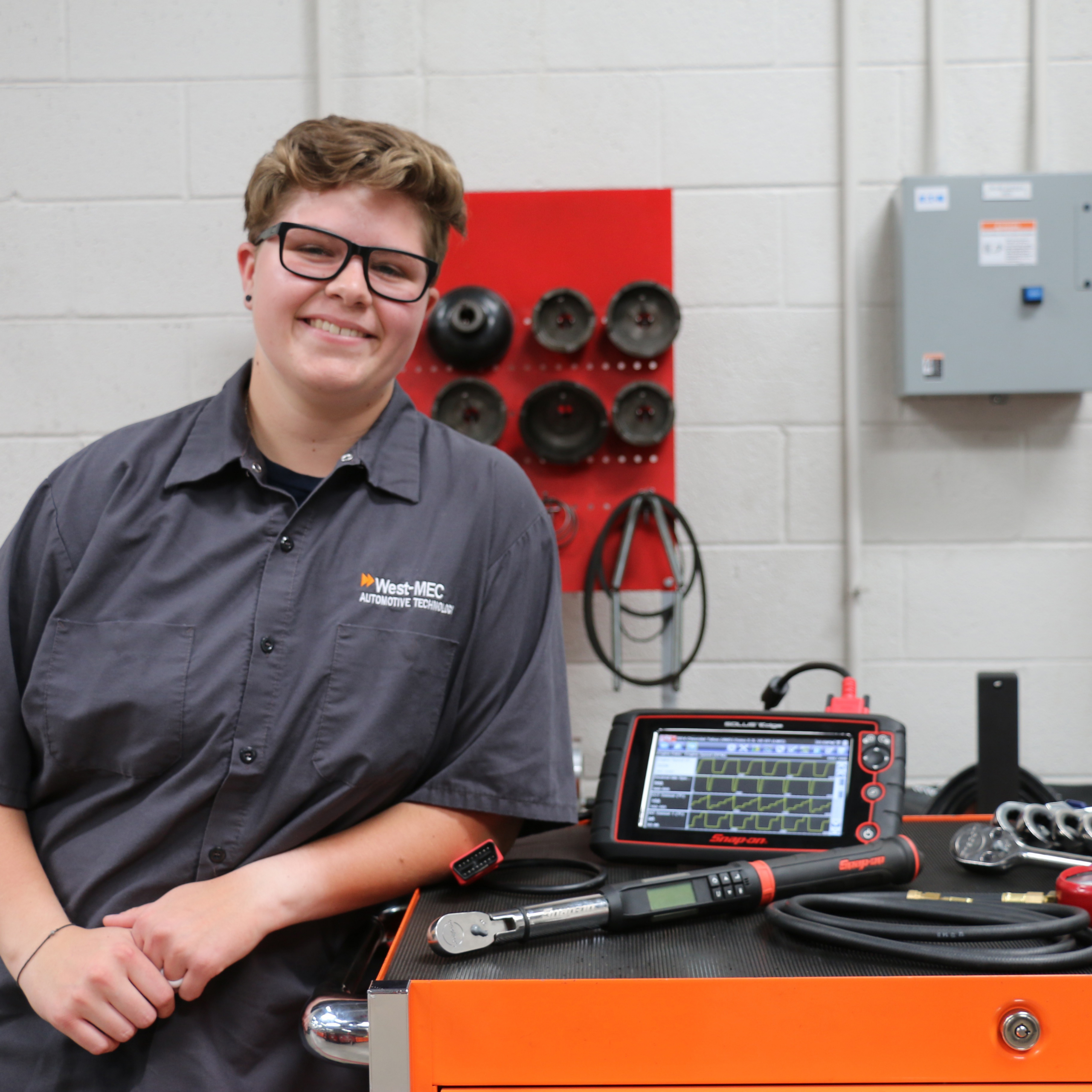Maricopa County in Arizona is setting a record-breaking pace as the fastest growing county in the U.S. for the past three years. Home to strong technical, health, aerospace, business and agricultural sectors, as well as low unemployment, competitive universities, affordable housing, and superb leisure and recreation options, it is no wonder 4.3 million people start careers, raise families and retire in the Phoenix area (U.S. News >amp; World Report, 2019). Prominent companies, like Nike and Microsoft, are investing in Maricopa County and rely on a pipeline of qualified workers.
A challenge in Arizona is the current 45 percent postsecondary attainment. Simply, there aren’t enough adults with the education needed to support the growing economy. By 2020, seven out of 10 jobs in Arizona will require more education after high school (Achieve60AZ, 2019).
West-MEC, a large career and technical education district in the greater Phoenix area, is striving to meet and exceed the needs of the economy. They are advancing dual and concurrent enrollment programs with Maricopa community colleges and partnering with Northern Arizona University (NAU) to strengthen pathways.
Further, nine programs are articulated to bachelor’s degrees through 90-30 pathways.
What is a 90-30 pathway?
In a 90-30 degree pathway, students complete 90 college credits at the community college. Through dual and concurrent enrollment offerings, West-MEC students are able to complete approximately 30 of these credits while still in high school.
Next, students complete the remaining 30 credits at Northern Arizona University through an online or on-location degree program.
“NAU is committed to providing quality instruction at a great value,” asserted Rita Cheng, university president. “Our 90-30 transfer programs let students maximize their community college experience. They can stay in their local community and earn a bachelor’s degree in highly marketable fields.”
How does a 90-30 pathway benefit students?
Students get a head start on postsecondary education while in high school. They are able to enter the workforce at a younger age, and they can support themselves while pursuing a degree or credentials.
“There are multiple benefits for students who chose to follow a 90-30 pathway. First, there is no waiting; they can begin working toward their degree right away. Additionally, the plan is clearly outlined, so they have a clear vision and can plan accordingly through their high school and CTE journey.
“Finally, the financial savings may be the most significant benefit of the 90-30 opportunity. For those students who may not have envisioned college as a viable option, earning their degree becomes a reality,” said April Tyrrell, West-MEC counselor.
A great benefit to students is the affordability of this degree. The average total cost of a four-year bachelor’s degree though the 90-30 path is more than $8,000 less than the typical cost of university attendance for an Arizona resident (NAU, 2019). The students pursuing 90-30 pathways see additional savings, able to live at home and skip the cost of room and board.
90-30 pathways offer on and off ramps with sustainable employment at every level. Students may enter the workforce directly after completing the associate degree and may return to complete the bachelor’s degree.
 “I took dual enrollment at my home high school and at West-MEC. I am proud to be halfway through my associate degree and the recipient of an academic scholarship,” said Garrett Rose, a law, public safety and security student. “Dual enrollment strengthened my commitment to my future education and career in criminal justice.”
“I took dual enrollment at my home high school and at West-MEC. I am proud to be halfway through my associate degree and the recipient of an academic scholarship,” said Garrett Rose, a law, public safety and security student. “Dual enrollment strengthened my commitment to my future education and career in criminal justice.”
Dual enrollment is for all students.
The West-MEC counselors and instructors believe it is a moral and economic imperative to increase awareness, access and equity for students. We focus not only on access, but also on academic and personal support. Forty-seven percent of West-MEC (2019) students participate in early college opportunities.
West-MEC’s early college programs serve special populations with equity. Male and female students participate equitably.
“Dual enrollment puts me ahead in college and life. This opportunity has shown me how affordable college is,” said Cali Orr, an automotive technology student. “Dual enrollment helps me with my college career by giving me a great direction for my future studies. This program has given me the ability to achieve more than my peers and put me ahead in my college career. I have the chance to get hired faster at a job I love.”
What is the process to establish this pathway?
Postsecondary pathways begin with robust dual and concurrent enrollment programs. West-MEC works closely with the Maricopa Community College and Northern Arizona University to strengthen and expand early college programs, certify instructors and support students.
Learn more at ACTE’s CareerTech VISION 2019, where West-MEC and its postsecondary partners will present Three’s Company: Building a High School, Community College to University Pathway. We hope to see you there on Thursday, December 5, 4:30–5:30 p.m.
Speranta Klees is the postsecondary partnerships manager at West-MEC. Her mission is to collaborate with colleagues for CTE programs that afford students full participation in a spectrum of postsecondary opportunities, meaningful work, financial independence and career advancement. She is a fellow with the Association for Career and Technical Education of Arizona and a recipient of the 2015 CTE Counselor of the Year Award. Email her.






